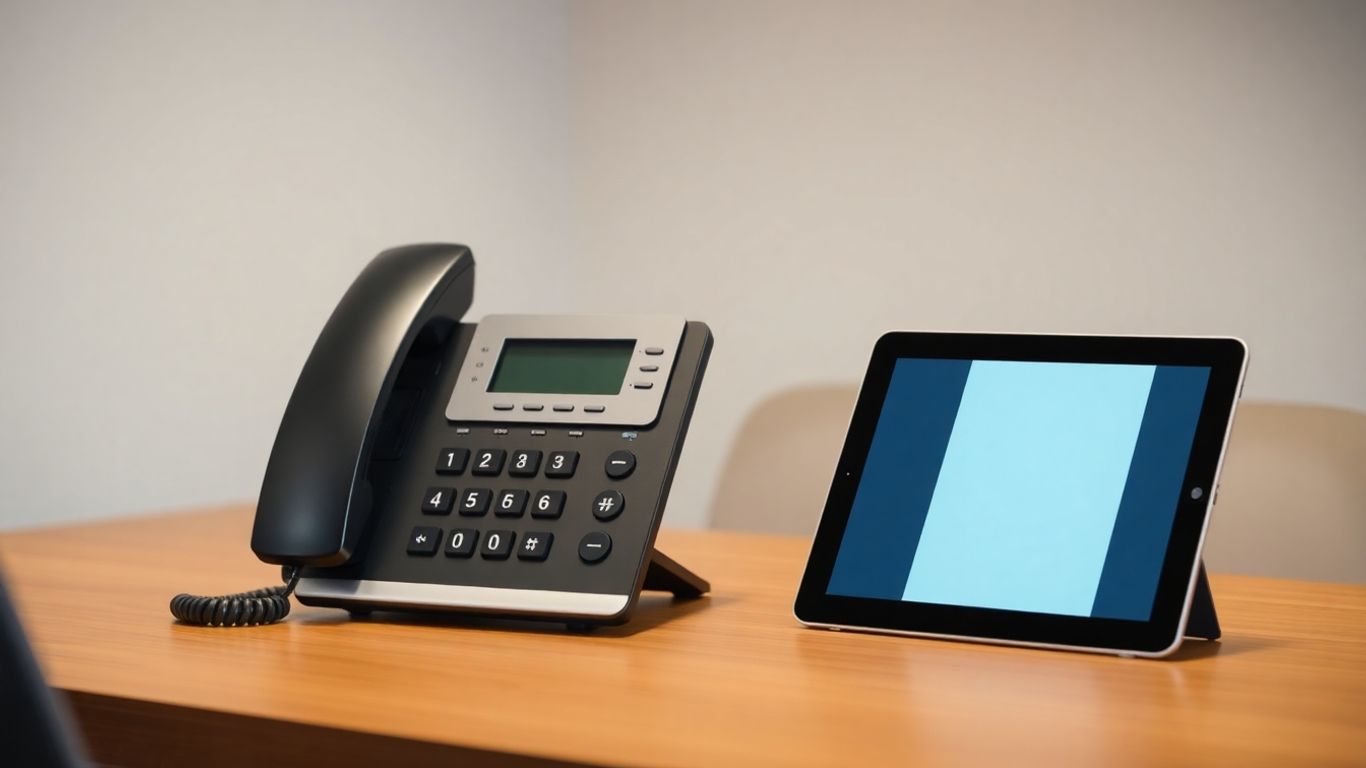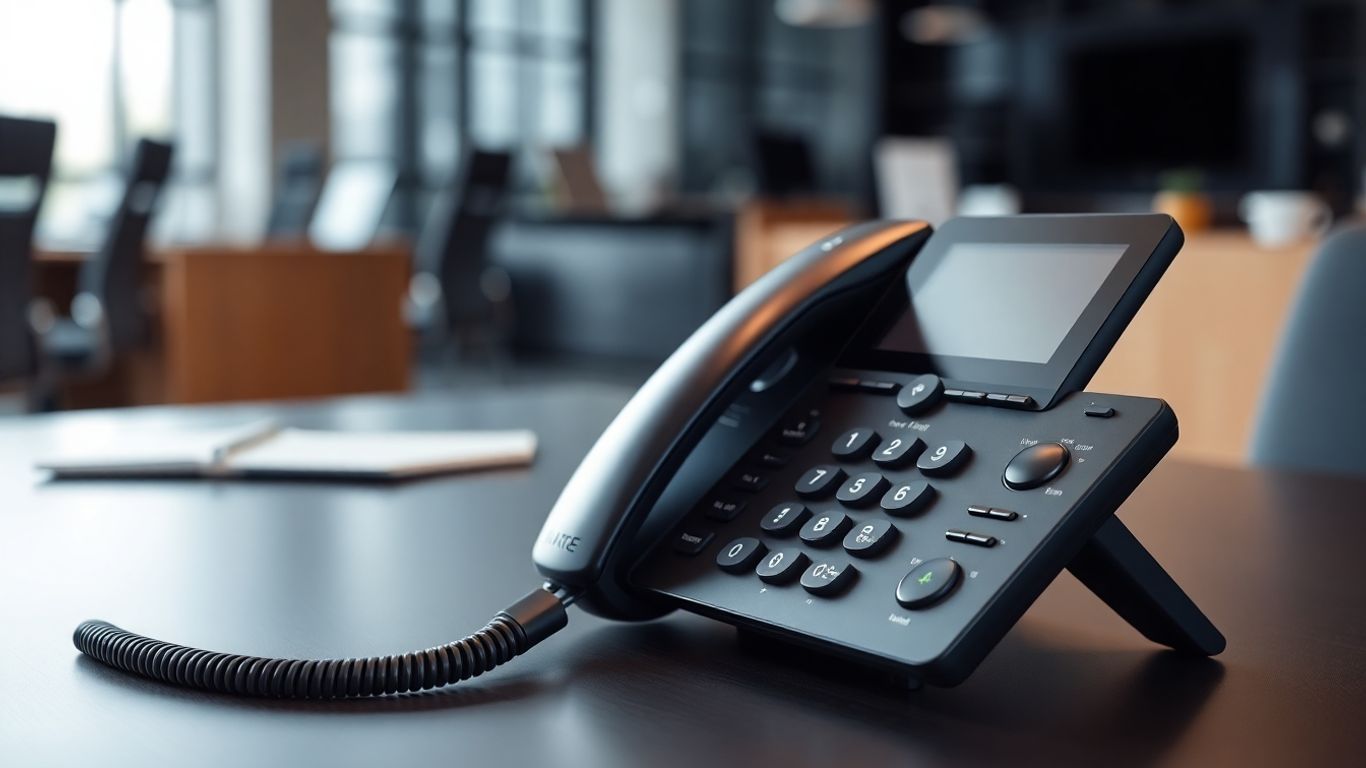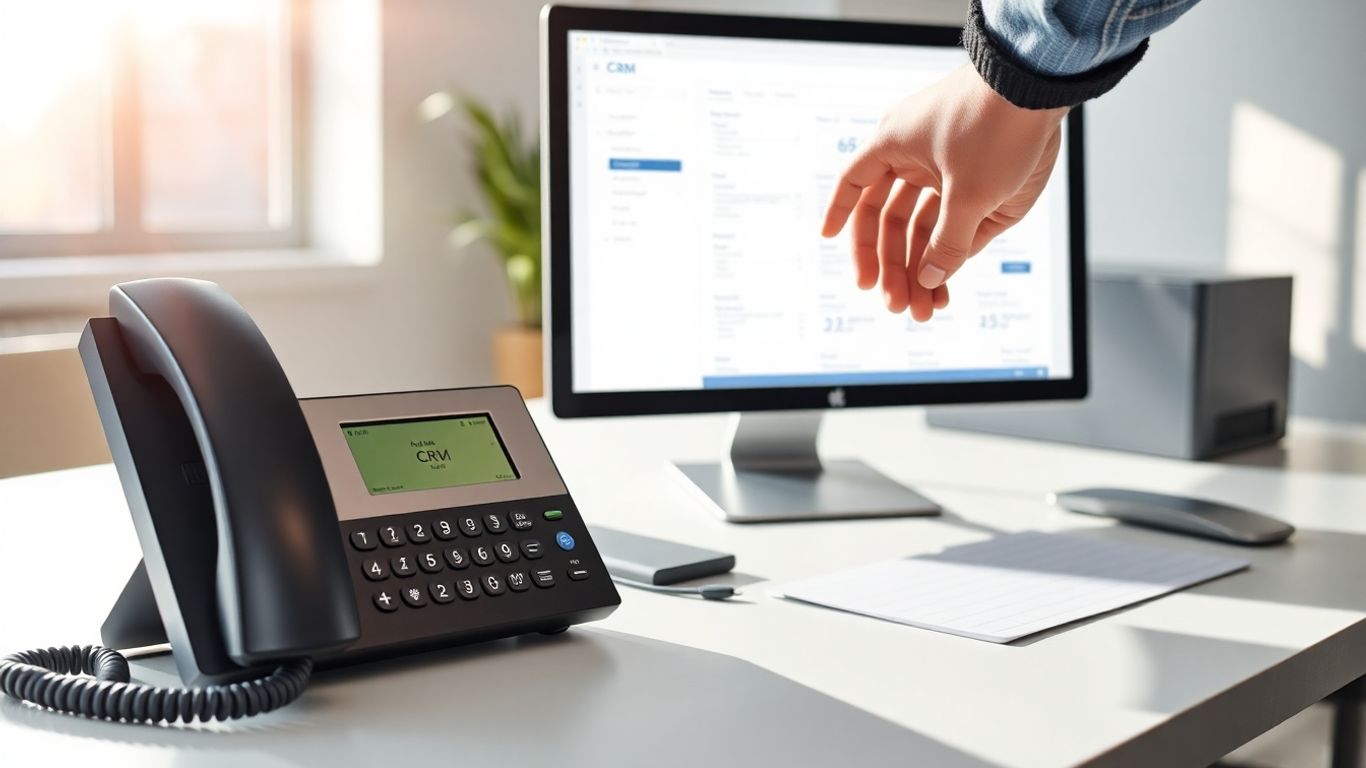Thinking about upgrading your business phone setup? If you're feeling swamped with calls or just want to make things run smoother, a 4-line phone system with auto attendant options might be exactly what you need. It's not just about having more lines; it's about smarter communication. Let's look at some features that can really change how your business handles calls.

Connecting your phone system to other tools you already use can make a huge difference in how smoothly your business runs. That's where Zapier comes in. Think of it as a super-connector that lets different apps talk to each other without you having to do anything manually.
This means your phone system can automatically update your CRM, send notifications to your team, or even create tasks based on call activity. It's like having a personal assistant who handles all the little data transfers and follow-ups.
Here's a quick look at what this kind of integration can do:
Platforms like Zapier help you automate workflows by letting you text appointment confirmations, push call recordings to other tools, and take other repetitive tasks off your plate. It's not just about connecting apps; it's about making your entire business operation more efficient. You can connect with over 9000 apps, turning your phone system into the central nervous system of your business. This kind of automation saves a massive amount of time and eliminates the need for manual data entry, keeping everything in sync. It truly works with the tools you already have, growing with your business from a startup to an empire.
Remember when businesses used to sweat over how many phone lines they had? Like, "Oh no, all four lines are busy!" It felt like a real bottleneck, didn't it? Traditional phone systems were pretty strict about that – four lines meant exactly four conversations happening at once. No more, no less.
But that's old news. Modern phone systems, especially those using VoIP (Voice over Internet Protocol), work totally differently. They aren't limited by physical wires anymore. Instead, they can handle a whole lot more calls at the same time. How many? Well, it really depends on your internet speed and the plan you're on, but it's usually way more than you'd get with those old-school systems. Think dozens, not just four.
This flexibility is a huge deal for businesses that are growing or just have busy periods. You don't have to worry about callers getting a busy signal when they're trying to reach you. It's like upgrading from a small parking lot to a massive, expandable garage – you've got space for everyone.
Here's a quick look at the difference:
This shift means you can give your business number out freely, put it on billboards, or even sky-write it (if you're feeling adventurous). Your phone system can handle the influx without breaking a sweat, letting your AI receptionist manage the conversations.

Remember the days of scribbled notes and missed voicemails? Those are pretty much over. With AI-powered message taking, your phone system acts like a super-efficient assistant, catching everything so you don't have to.
This means voicemails aren't just audio files anymore; they're instantly turned into text. You can read them right away, saving you the time and hassle of listening back. It's like getting a text message instead of a voice note, but for your business calls.
Here's how it makes life easier:
This isn't just about convenience; it's about making sure no important customer query or business opportunity slips through the cracks. It streamlines communication and keeps you connected, even when you're busy or away from your desk.
Beyond just taking calls, a modern phone system should let you communicate via text too. This isn't just about sending a quick "on my way" message; it's about building automated text workflows that can handle common customer interactions without you lifting a finger.
Think about it: when a customer calls and asks for pricing, instead of someone having to find and send a rate sheet, the system can do it automatically. Or if they want to book an appointment, it can instantly text them a link to your scheduling calendar. This kind of automation is a real time-saver and makes things super convenient for your customers.
Here are some ways texting workflows can help:
These automated text messages can be triggered by specific keywords or intents detected during a call, making customer interactions smoother and faster. It's all about providing the right information at the right time, without adding extra work for your team. Plus, you can often set up pre-written message templates to ensure consistency and save even more time.

Most businesses just sort of let time happen to them, you know? Calls come in, calls go out, and it's all a bit of a free-for-all. But time is actually the one thing you can't get back. That's why having a phone system that lets you manage when it's active is a pretty big deal.
Think about it. You tell your system your actual business hours, and it sticks to them. No more "Sorry, we're closed" messages at 2 PM on a Tuesday when you're definitely open. It can also handle holidays, weekends, or even different time zones without you having to lift a finger. This means your customers always get the right information at the right time.
Here’s how it helps:
This isn't just about saving you from answering calls when you're off the clock. It's about making sure the right message gets delivered at the right moment. It makes your business look more professional and ensures customers don't get frustrated by wrong-time messages.
You know how sometimes you're talking to someone, and there's that awkward pause where you can practically hear them thinking? It's like they're trying to catch up, and it just kills the flow of the conversation. Well, that's exactly what we've worked to eliminate with our phone system's AI.
This system responds in milliseconds, which is fast enough to keep up with natural, back-and-forth talking. Think of it like a dance – a quick partner keeps the rhythm going, while a slow one just trips everyone up. We've all been on the receiving end of those slow, robotic responses from automated systems, and it's just plain frustrating. We got rid of that.
Our AI doesn't just answer fast; it processes information and reacts just as quickly. You can ask it a complicated question, and it won't stumble. It's like having a super-smart assistant who's always ready with an answer, no hesitation. This speed isn't just a cool party trick; it genuinely makes interactions feel more human and less like you're talking to a machine. It's the difference between a clunky experience and a smooth, natural chat.
We're pretty serious about this speed thing. We've got a whole team dedicated to making it even faster, constantly tweaking and optimizing. Because in any conversation, especially in business, every millisecond counts. It’s about making sure your customers feel heard and understood, right away.
This focus on speed transforms a potentially annoying interaction into something that feels effortless and professional. It's about respecting your customer's time and making them feel valued from the very first word.
Think about how much time is wasted trying to share important call information. Most businesses keep call data locked away in complicated systems, making it a real hassle to get anything useful out of it. We've made sharing call details as simple as sharing a video online.
Here's the basic idea:
No need for special logins, extra software, or calling in the IT department. It's straightforward.
Why is this a big deal? Because making information easy to share can really change things:
The real benefit comes from removing the roadblocks that slow down information. When ideas can spread easily and problems get solved faster, your whole team becomes smarter and more effective. It's like how email sped up communication years ago; we're doing the same for call data.
Some might worry about who gets the link, but the risk of accidentally sharing a link is far smaller than the cost of not sharing important information when it's needed. If you're still treating your call data like it's ancient history, you're likely missing out on opportunities.
If you're still treating your call data like it's ancient history, you're probably missing out on some serious opportunities. This phone system gives you the tools to actually see what's going on.
Understanding your call patterns and customer interactions is key to making smart business decisions. It's not just about knowing how many calls you got; it's about understanding the quality of those calls and how they impact your bottom line. You can visualize calling metrics to help gauge productivity and find areas where things could be better. Plus, seeing message trends can give you a clearer picture of how people are communicating with your business.
Here's a quick look at what you can track:
Having this kind of data readily available means you can stop guessing and start knowing. It helps you figure out where your time and resources are best spent, and where you might need to adjust your strategy. It's like having a crystal ball for your business communications.
For example, you might notice that most of your support calls come in between 10 AM and 11 AM. Knowing this, you can make sure you have enough staff on hand during that specific hour. Or, you might see that a lot of customers are dropping off at a certain point in the auto attendant menu, signaling that the menu might be confusing or needs reordering. This kind of insight is gold for improving customer experience and operational efficiency. You can even integrate this data with your CRM system to get a fuller picture of your customer relationships.

Connecting your phone system to your Customer Relationship Management (CRM) software is a big deal. It basically means your phone calls and your customer data can talk to each other. This isn't just about making things a little easier; it can really change how you work with customers.
When your phone system and CRM are linked, you get a bunch of cool benefits. For starters, when a customer calls, your CRM can pop up with all their info right away. You can see their past purchases, any notes you've made, and how long they've been a customer. This lets you give them more personalized service because you already know who they are and what they might need. It makes every customer feel like a VIP.
Here’s how it helps:
Think about it: instead of digging through different systems, everything you need is in one place. This makes your team more efficient and helps build stronger relationships with your customers because you're always prepared.
Integrating your phone system with your CRM isn't just a tech upgrade; it's a strategic move to better understand and serve your customers. It bridges the gap between communication and data, creating a more unified and effective customer experience.
Setting up your phone system's auto attendant doesn't have to be complicated. With a drag-and-drop designer, you can visually build out your call flows without needing to write a single line of code. Think of it like building with digital blocks. You grab a block for "answer call," another for "play greeting," and maybe one for "transfer to sales." Then you just connect them in the order you want them to happen.
This visual approach makes it super easy to see exactly how a call will progress. You can add steps like playing a recorded message, offering menu options (like pressing 1 for support, 2 for sales), collecting caller information, or routing the call to specific departments or individuals. It's all about arranging these functional pieces in a logical sequence.
Here's a general idea of how it works:
The real power comes from how easily you can adjust and refine these flows. If you notice callers getting confused at a certain point, you can quickly rearrange the blocks or add a clearer instruction. It’s a much more intuitive way to manage your phone system's logic compared to digging through complex settings or relying on technical support for every little change.
Building your auto attendant should feel more like designing a flowchart than writing a computer program. The goal is to make complex call routing accessible to anyone, allowing you to create a professional and efficient customer experience without the technical headache.
Want to build your own custom tools without any coding? Our Drag-And-Drop Designer makes it super easy! You can create exactly what you need, just by moving things around on your screen. It's like playing with building blocks, but for your website or app. Ready to see how simple it is? Visit our website to try it out!
So, that's the lowdown on getting a phone system that actually works for your business. We've talked about how a 4-line system, especially with an auto attendant, can make things smoother. It’s not just about having more lines; it’s about making sure customers get where they need to go without a hassle. Think about how much time and frustration this can save everyone. Plus, with all the smart features out there now, like AI message taking and easy integrations, it’s way easier to manage calls than you might think. Picking the right system means your business can handle more calls, look more professional, and ultimately, keep customers happier. It’s a pretty big deal for any growing company.
Think of a 4-line phone system like having four separate phone lines coming into your office. This means your team can have up to four different phone conversations happening at the exact same time without anyone getting a busy signal. It's a step up from a single line, allowing more people to reach you.
An auto attendant is like a virtual receptionist. When someone calls, it answers with a greeting and offers options, like 'Press 1 for Sales' or 'Press 2 for Support.' This helps callers get to the right person faster and makes your business seem more organized and professional, even if you're a small team.
Absolutely! You can set up your auto attendant to give different greetings and options based on the time of day. So, when your office is closed, callers can hear a message saying you're unavailable and perhaps get instructions on when to call back or leave a voicemail.
Instead of just a regular voicemail, AI-powered message taking means the system can actually understand what the caller is saying. It can then turn that spoken message into text, which you can read easily on your screen. This saves you from having to listen to every single voicemail.
This means your phone system can handle as many calls at once as needed, without ever getting busy. Imagine never having to tell a customer 'all our lines are busy'! It's great for businesses that get a lot of calls, ensuring no customer is ever turned away because the system is overloaded.
Zapier is like a connector for different apps. If you use a CRM, for example, Zapier can automatically update customer info after a call ends or send a text message when a new lead comes in. It connects your phone system to other tools you use, making everything work together smoothly and saving you time on manual tasks.
Texting workflows let your phone system automatically send text messages based on what's happening during a call. For instance, if a caller asks about pricing, the system could automatically text them a link to your price sheet. It's a smart way to give callers information instantly without interrupting the main conversation.
Yes, you can set specific business hours for your phone system. The auto attendant can then provide different greetings or options depending on whether it's during your normal working hours, on a holiday, or outside of business time. This ensures callers always get the right information at the right time.
Start your free trial for My AI Front Desk today, it takes minutes to setup!








